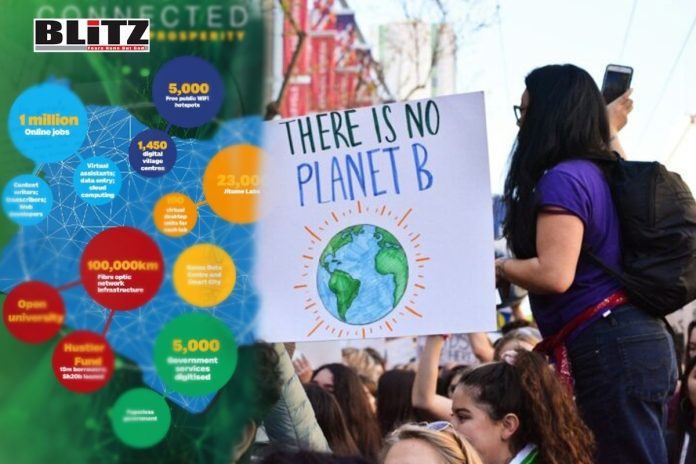Kenya stands at a pivotal juncture, facing the formidable challenge of aligning its climate action with its overarching development goals. Central to this endeavor is the urgent need to mobilize the necessary finances to translate ambitions into tangible outcomes. According to the insightful Landscape of Climate Finance in Kenya report by the Climate Policy Initiative (CPI) in March 2021, an estimated $40 billion is required by 2030 to meet Kenya’s mitigation and adaptation needs outlined in its Nationally Determined Contribution (NDC) to the Paris Agreement.
The scope of Kenya’s climate finance needs encompasses critical sectors such as energy, agriculture, water, and forestry. In the energy sector, Kenya aims to transition towards renewable energy sources like wind, solar, and geothermal, not only to reduce its carbon footprint but also to ensure energy security. This transition demands substantial investments in infrastructure, technology, and capacity building. Similarly, in agriculture, Kenya necessitates a shift towards sustainable and climate-resilient practices, calling for investments in climate-smart agriculture technologies, improved water management systems, and the development of drought-resistant crops to safeguard food security.
Given Kenya’s susceptibility to droughts and floods, the focus on water conservation and management becomes critical. Investments in optimizing water use, enhancing storage infrastructure, and implementing effective watershed management are vital for ensuring water availability for agriculture, human needs, and ecosystem health. Moreover, forestry and land use present avenues for carbon sequestration and ecosystem revival. Thus, financial commitments are required for afforestation, reforestation, sustainable land management practices, and the preservation of natural forests. These initiatives not only contribute to climate mitigation but also bolster the resilience of Kenya’s ecosystems, securing a sustainable future for both the environment and communities.
Achieving the $40 billion goal demands a collaborative approach, harnessing public, philanthropic, and private funds. Blended finance models, uniting public and philanthropic resources to attract private investments, are pivotal for funding sustainable climate projects. Successful endeavors showcase that such projects can yield competitive returns while delivering substantial environmental and social benefits. Through these models, stakeholders can maximize resources, effectively mobilizing capital to address Kenya’s climate challenges while fostering economic growth and social progress.
Kenya’s climate finance sector is witnessing a surge in interest, evidenced by more than 95 impact investors overseeing 136 impact capital vehicles. Additionally, between 2005 and 2015, the country attracted over $650 million in private investment capital, reflecting a growing enthusiasm for international sustainable investments. However, the challenge ahead involves scaling up these investments, broadening channels, and augmenting private capital inflows into Kenya’s climate projects. Such endeavors are crucial for advancing the nation’s sustainability agenda and addressing pressing climate issues effectively.
As Kenya strives towards meeting its NDC targets, the alignment of financial mechanisms, policy frameworks, and market dynamics becomes crucial. The effectiveness of blended finance in mobilizing the necessary $40 billion depends on a collective vision among stakeholders. This vision must recognize climate action as more than an environmental necessity but also as a pathway to sustainable economic growth. By fostering such a shared perspective, Kenya can unlock the full potential of climate initiatives, driving both environmental resilience and economic prosperity for its people.
By leveraging the capacities and resources of the government, development finance institutions (DFIs), philanthropic entities, and the private sector, Kenya stands poised to create a resilient financing framework for its climate initiatives. This collaborative endeavor has the potential to set a precedent for other nations, demonstrating the efficacy of blended finance in reconciling climate aspirations with financial limitations. Through this model, countries can navigate towards resilience and sustainable development, showcasing how collective action can drive meaningful progress in addressing the challenges of climate change.




